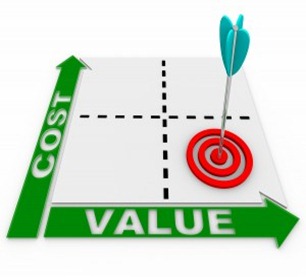
Have you ever been excited to find a cheap source of leads only to be disappointed by low conversion rates? Have you ever paid more than you felt comfortable with for higher quality leads? Have you ever paid way too much for poor quality leads? When it comes to lead generation, lead quality is often closely related to cost. However, cost per lead is not the only part of the equation. It is essential to understand how your lead sources and lead generation efforts pay off. If you don’t look beyond cost per lead and examine your return on investment, you could find yourself making the same mistakes time and time again.
First, no matter where you source your leads, make sure to know your numbers. You should know:
- Cost per lead
- Conversion rate
- Average profit per conversion
- Profit per lead
For example, if you buy 100 leads for $100, your cost per lead is $1. If your conversion rate is 5 percent with an average profit per conversion of $50, 100 leads will generate $250. This would put your profit per lead at $2.50. Once you know your profit per lead, you can compare that to your cost per lead and decide if it makes sense to continue using this particular lead generation method. Before you abandon a lead source completely, consider if it’s possible to increase either the conversion rate or average profit per conversion.
In addition to looking at the numbers, consider how much a good lead is worth to you. If you sell expensive products such as real estate or industrial equipment, a single high quality lead could cost hundreds or thousands of dollars but the potential payoff could be well worth your money. In contrast, if you sell inexpensive products, it doesn’t make sense to spend more than a few pennies per lead.
Another factor to look at involves where your leads are in the sales cycle. Are they simply gathering information or are they ready to buy? It’s smart to look at the source of these leads as well. Where did they come from? For example, if your leads signed up to enter a chance to win a vacation to Hawaii at the local home and garden show, they’re not necessarily interested in buying a new hot tub, refinancing a loan, or having their kitchen remodeled. Thus, these leads will be less likely to convert than leads who filled in an online request form for a quote on a new hot tub, loan, or kitchen cabinets.
Finally, high quality leads tend to be highly targeted leads. Whether you are generating leads on your own website or buying them from a vendor, the better targeted your leads, the more successful you will be at converting them. This may require optimizing your landing page and advertisements to attract the right people or working with your lead vendor to filter your leads.
For example, if you are a mortgage broker who specializes in reverse mortgages in a particular city, ask your lead vendor to provide you only with leads who want a reverse mortgage in specific ZIP codes. This allows you to get more of the leads you want without increasing your costs.
Lead generation is an art form in its own right. Know your numbers and find ways to increase your chances for success. Take both an objective and subjective look at all of your lead sources and determine which sources deliver the most targeted leads and the best overall value.













